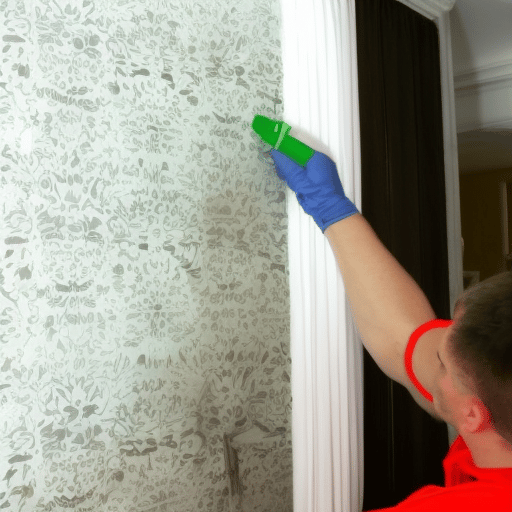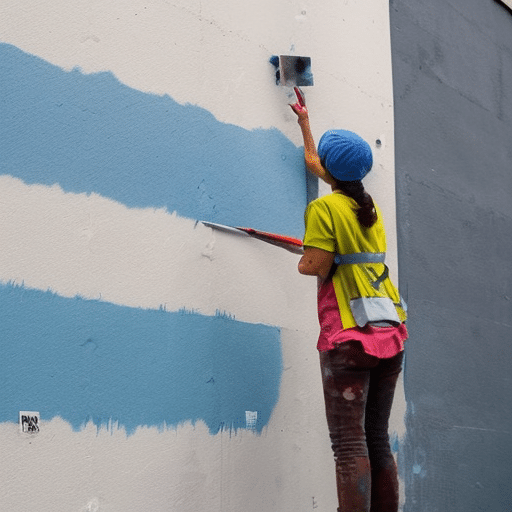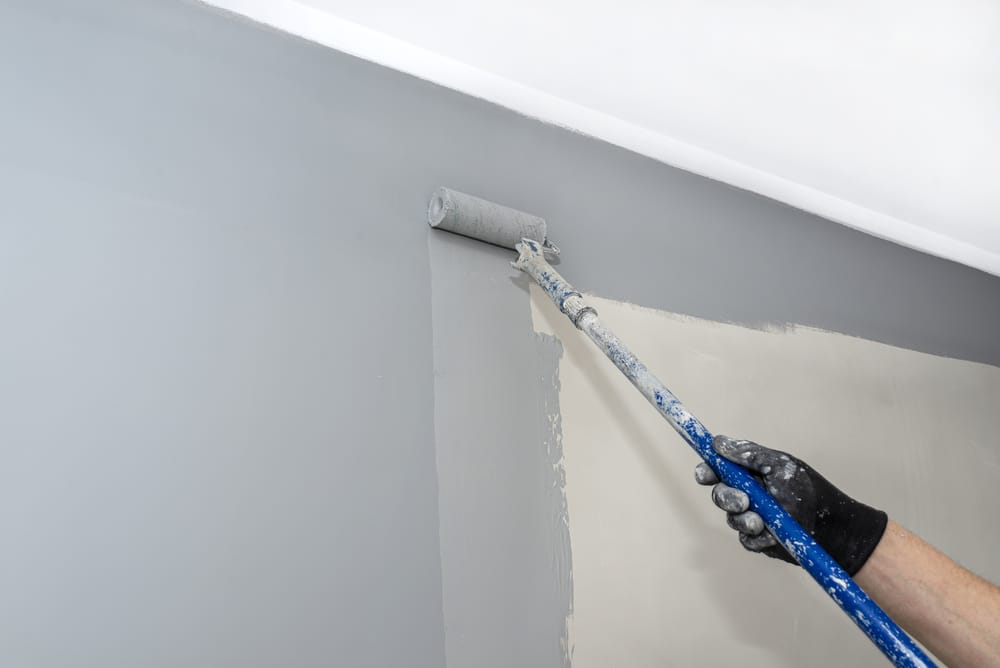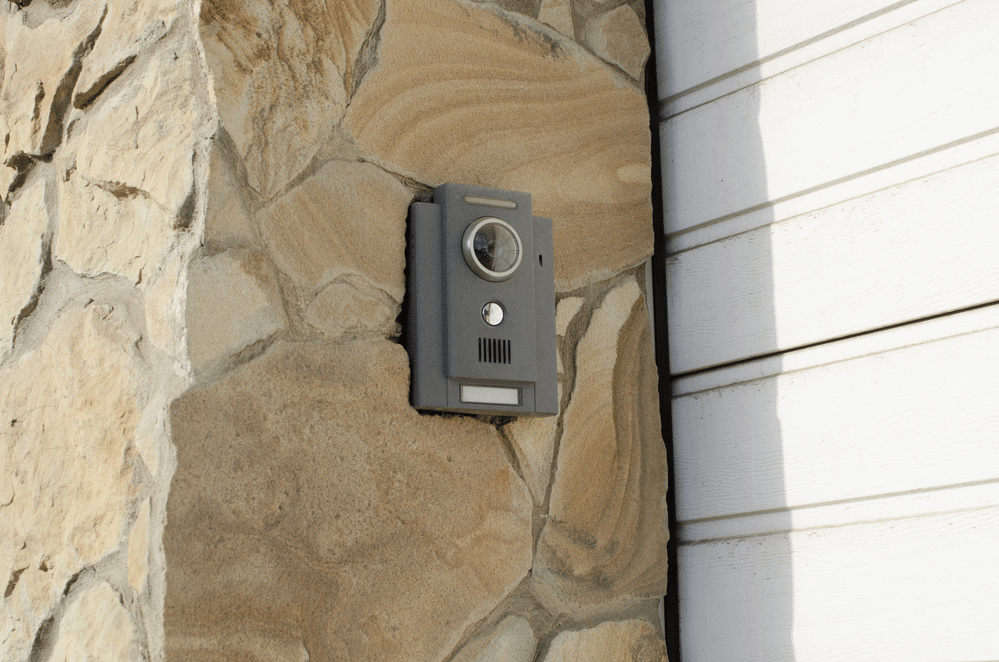Last Updated on
Are you considering a home makeover but dreading the laborious task of stripping wallpaper? We know how it feels. But before you start rolling up your sleeves, let’s consider the question: should you strip wallpaper before painting? It might seem like an obvious answer, but there are actually some surprising alternatives. In this blog post we’ll explore whether or not it’s necessary to strip wallpaper and what other options may be available for giving your walls a fresh look without all that hard work. So don’t despair just yet – read on to find out more about tackling this project with ease.
Table of Contents:
- Stripping Wallpaper – A Necessary Evil?
- Painting Over Wallpaper – Is It Possible?
- Alternatives to Stripping Wallpaper
- Conclusion
Stripping Wallpaper – A Necessary Evil?
Stripping wallpaper is often seen as a necessary evil when it comes to painting walls. It can be an arduous task, but if done correctly and thoroughly, it will ensure that the paint job looks professional and lasts for years.
Why Stripping Wallpaper Is Necessary?
The main reason why stripping wallpaper is so important is because of the adhesive used to attach it to the wall. If you don’t remove all of this adhesive before painting, then your paint won’t adhere properly and could start peeling off in just a few months or even weeks after being applied. This means that you’ll have wasted time and money on a project that didn’t last very long at all.
What Are The Potential Consequences Of Not Stripping Wallpaper?
If you don’t strip your wallpaper before applying new paint, there are several potential consequences:
– Paint may not stick properly, leading to bubbling or cracking over time.
– Uneven coverage due to old glue seeping through the new layer of paint, resulting in an uneven finish with visible patches where old glue has been exposed again.
– Bubbles form underneath the paper as the air gets trapped between layers, which can cause further damage down the line if left unchecked.
– Mould growth due to moisture getting trapped behind multiple layers of paper, creating an ideal environment for mould spores to thrive in and spread throughout your home or office space quickly.
How to Strip Wallpaper Properly?

Stripping wallpaper isn’t something that should be rushed, so take your time with each step so that you get good results every time:
Start by using a scoring tool such as a razor blade scraper or perforator (available from most hardware stores) along any seams between sheets of paper. This will help loosen up stubborn adhesives without damaging walls too much.
Next, use warm water mixed with detergent (or specialised wallpaper stripper) on large sections at once. Apply liberally until saturated then wait 10-15 minutes before scraping away softened material gently with either a putty knife or plastic scraper (depending on how thick/stubborn the residue is). Be sure not to press too hard against walls while doing this.
Once finished removing all loose material from the surface area(s), rinse off any remaining residue using clean water and cloths or sponges until completely gone. Dry immediately afterwards using fans or dehumidifiers if needed to prevent future mould growth issues caused by dampness lingering inside porous surfaces like plasterboard, etc.
Let’s explore whether it is possible to paint over wallpaper and what the best approach would be for this project.
Painting Over Wallpaper – Is It Possible?
Painting over wallpaper is a popular option for those looking to spruce up their home without the hassle of stripping and replacing old wallpaper. But is it really possible?

The answer depends on the type of wallpaper you have. If your wallpaper has a vinyl or fabric coating, painting over it can be difficult as these coatings are designed to repel paint. However, if your wallpaper is made from paper, then painting over it should be relatively straightforward.
Before attempting to paint over any kind of wallpaper, you’ll need to make sure that the surface is clean and free from dust and dirt. This will help ensure that the new layer of paint adheres properly. You may also want to lightly sand down any glossy areas in order to create a better bond between the existing wall covering and the new paint layer.
When selecting a type of paint for this project, choose one specifically designed for use on walls with existing coverings such as wallpapers or tiles – often referred to as ‘vinyl matt’ paints. These are more likely than other types of emulsion paints to adhere well when applied directly onto surfaces like wallpapers which already have an existing finish or texture on them. It is important not to skimp on quality here; cheaper paints may seem attractive but they will not necessarily give you good results.
Once all preparation work has been completed, apply two coats of your chosen vinyl matt emulsion using either a roller or brush depending upon how much coverage you require (the latter being best used for smaller areas). Allow each coat time enough time dry before applying another – usually around four hours – otherwise, there’s a risk that the topcoat will crack once dried due to its inability to bind correctly with what lies beneath it.
Finally, if you’re still unsure about whether painting over your current wallpaper is the right choice for you then why not consult an expert? A professional decorators should be able to advise accordingly based on their experience working with different kinds of finishes found in homes across the UK today.
While painting over wallpaper can be done, it is not always the best option and there are alternatives to stripping wallpaper that may provide better results. Let’s take a look at some of these options in the next section.
Alternatives to Stripping Wallpaper
Stripping wallpaper can be a tedious and time-consuming task. Fortunately, there are some alternatives to stripping wallpaper that can help you get the job done faster and easier.
One option is to use a steamer. A steamer works by heating up the glue behind the wallpaper, allowing it to come off in large strips without damaging your walls or requiring any scraping or sanding. This method is best for wallpapers with an acrylic adhesive backing as it will not work on paper-backed wallpapers. To use this method, make sure you have all of your safety gear ready before beginning – goggles, gloves, and a face mask are essential when using steamers.
Another alternative is covering the existing wallpaper with another layer of either fabric or new wallpaper. This way you don’t have to worry about removing old paper at all. If going this route, make sure you choose a fabric or paper that has enough weight so it won’t easily tear away from the wall over time due to movement in your home (like opening windows). Additionally, ensure that whatever product you choose adheres well enough so that it won’t peel away from the original layer of wallpaper beneath it after being applied.
Finally, if neither of these options appeals to you then consider painting directly over top of your existing wallpaper instead. It may take several coats but eventually, everything should cover nicely – just make sure whatever paint type/brand/colour combination you select will adhere properly onto both layers (old & new) without bubbling up or peeling off later down the line once dry.
Conclusion
In conclusion, when it comes to deciding whether you should strip wallpaper before painting or not, the answer is that it depends on your situation. If you have a lot of time and resources available, then stripping the wallpaper off can be beneficial as it allows for better adhesion of paint and a smoother finish. However, if you are short on time or resources, then painting over the wallpaper may be an option worth considering – just make sure to use quality products. Ultimately, when it comes to answering the question “should you strip wallpaper before painting” – only you can decide what works best for your project.
Paul is the type of person who never met a problem he couldn’t fix. He can always be found tinkering with something in his house, even if it isn’t broken! His tips and tricks are often shared on our site. He’s the one you call when something breaks because he has been known to improvise fixes for everything from leaky faucets to malfunctioning dryers.



